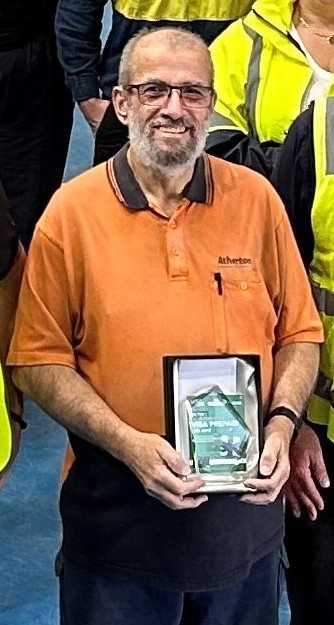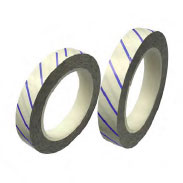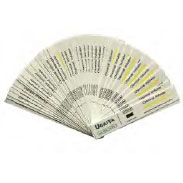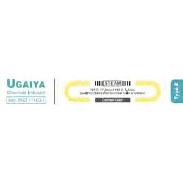

Throughout Atherton’s 135-year history, there have been hundreds of staff that have contributed to our success. One name in particular has remained synonymous with dedication and resilience for an impressive 50 years – John Fousketakis. As an Atherton Fabricator, John has not only witnessed the evolution of the industry but has played a pivotal role in shaping its trajectory.
John recently shared his journey with Atherton, which began when he was attending Glendonald School for the Deaf. Atherton recognised his potential, offering him training and ultimately an apprenticeship. John excelled in his role, discovering a natural aptitude for the job.
John’s career at Atherton is marked by significant milestones, with one standout achievement being the completion of his apprenticeship. Overcoming the challenges posed by his deafness, John not only finished his training but did so with commendable success.
Reflecting on changes in the industry since 1973, John highlighted the technological advancements that have shaped hospital sterilizers. From a time without computers to today’s high-tech designs and even Atherton’s new robotics, John has been a witness to the industry’s transformation.
When asked about favorite memories, John fondly recalled his time working alongside Jimmy Campbell, a great leader who left a lasting impact on him. It is moments like these and the satisfaction derived from the job that has brought immense joy to John throughout his tenure.
Describing the work environment at Atherton, John emphasised the company’s unwavering support, particularly during his health challenges. The supportive atmosphere and meaningful relationships with colleagues have been crucial in fostering John’s longevity with the company.
John’s journey saw him move between Melbourne and Queensland, with a return to Melbourne after the closure of the Queensland facility. This transition not only allowed him to come back home but also played a role in addressing his health issues, emphasising the importance of Atherton’s commitment to employee well-being.
Addressing the challenge of deafness in the workplace, John expressed gratitude for the understanding and support he has received at Atherton. According to him, there have been no problems as colleagues have always been accommodating and considerate.
To those starting their careers, John offers a piece of advice: “Securing a job with Atherton means securing a job for a lifetime”. His words reflect the stability and commitment that we at Atherton are proud to provide to our employees.
 As John reflects on his 50 years at Atherton, he shares that the journey has been challenging at times, but the support from great people has been a constant. His legacy is not just one of professional accomplishment but also resilience, determination, and the enduring strength of the Atherton community.
As John reflects on his 50 years at Atherton, he shares that the journey has been challenging at times, but the support from great people has been a constant. His legacy is not just one of professional accomplishment but also resilience, determination, and the enduring strength of the Atherton community.
In celebrating John Fousketakis, Atherton acknowledges not only a dedicated Fabricator who has put his heart and soul into a wonderful career but also a living testament to the company’s values and the enduring spirit of its employees. Here’s to 50 remarkable years and a legacy that will undoubtedly inspire generations to come.
There is a bit of confusion about the ‘type’ of chemical indicator that should be used to monitor a steam sterilization cycle.
Chemical indicators (CIs) as described in ISO 11140 are classified into six types (formerly called classes). You should be familiar with the types of chemical indicators and their intended use. so that you can choose the correct Chemical Indicator for the sterilization process being monitored. Your choice should be based on the information you need about a particular sterilization process.
The classification structure is intended to denote the characteristics and intended use of each type of indicator. One type is not considered superior or inferior to another; they serve different purposes and are intended for specific sterilization processes. For example, a type 6 indicator is not ‘better’ than a type 5 indicator. In fact, the type 5 indicator (integrator) is what is recommended for routine steam sterilizer load monitoring as they are designed to react to all three of the critical variables (steam, time and temperature) of the steam sterilization process and perform in a manner that parallels the performance of biological indicators (BIs).

Type 1 – are process indicators such as sterilization tape. These are designed to differentiate a package that has been in a sterilizer from one that has not. These indicators are single parameter meaning they respond to only one parameter of the specific sterilization process. For steam, they react to heat. The CI contains a chemical that reacts to a specific sterilization process with a colour change usually turning from yellow to dark brown/black.

Type 2 – Indicators for specific tests. These include the Bowie-Dick test which measures the air removal performance in pre-vacuum steam sterilizers.

Type 3 – Single parameter indicators. These are designed to respond to only one variable of the sterilization process that they are designed to monitor. Single-variable indicators may be used as internal chemical indicators, but integrating (Type 5), indicators provide more information about the sterilization process.

Type 4 – Multi-variable indicators are designed to react to two or more of the variables of the sterilization process that they are designed to monitor. They may be used as internal chemical indicators. They are inexpensive and are built into most of the sterilization packaging materials on the market including strips, tape, pouches and tubing. They are best used in conjunction with the other indicators mentioned below.

Type 5 – are called integrating indicators (integrators) and are designed to test all three critical variables – steam, time and temperature. They perform in a manner that parallels the performance of biological indicators (BIs). However, it is important to understand that chemical indicators do not contain live bacterial spores and should not be used as a substitute for a biological indicators.

Type 6 – are called emulating indicators (emulators) and again are designed to test all three of the critical variables, but only of a specified sterilization cycle. They should only be used in the specific cycle for which they are labelled. For example, one of the available Type 6 chemical indicators is labelled for use in a pre-vacuum, 134ºC, 4-minute cycle. This indicator can be used only in that cycle.

These in-house training sessions offer an opportunity for new and experienced CSSD staff to learn about steam and low-temperature sterilisation, mechanical decontamination and validation while getting hands-on with the equipment. The day also includes a tour of the facilities where our world-class sterilizers are manufactured.
Location: Atherton Head Office, 372-376 Darebin Road, Alphington. Victoria
Numbers are limited so don’t miss out. To book call Customer Service on 1300 580 870 or info@atherton.net to reserve a place.
Tea and coffee along with a light lunch will be provided. Closed shoes must be worn for the factory tour.
Dates for 2024
Thursday 14th March
Thursday 6th June
Thursday 12th September
Thursday 5th December

International National Women’s Day – March 8th
NSW SRACA Conference – 18th to 20th March, Opal Cove Resort, Coffs Harbour NSW
IHEA National Conference – 3rd -5th June Marvel Stadium, Docklands, Melbourne (Healthcare Facility Management & Design Professionals)
ABSANZ Annual Conference (The Association of Biosafety for Australia and New Zealand), Brisbane Convention and Exhibition Centre, Monday 4th Nov – Friday 8th Nov 2024

International National Women’s Day – March 8th
NSW SRACA Conference
18th – 20th March, Opal Cove Resort, Coffs Harbour NSW
IHEA National Conference
3rd – 5th June Marvel Stadium, Docklands, Melbourne (Healthcare Facility Management & Design Professionals)
ABSANZ Annual Conference (The Association of Biosafety for Australia and New Zealand), Brisbane Convention and Exhibition Centre, Monday 4th Nov – Friday 8th Nov 2024
Back to articles